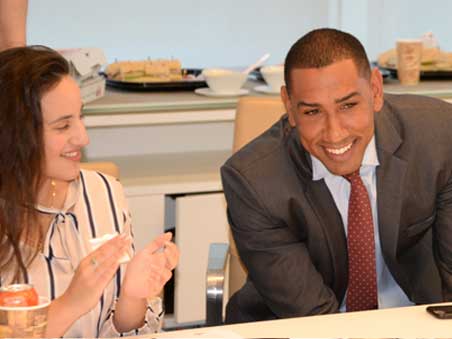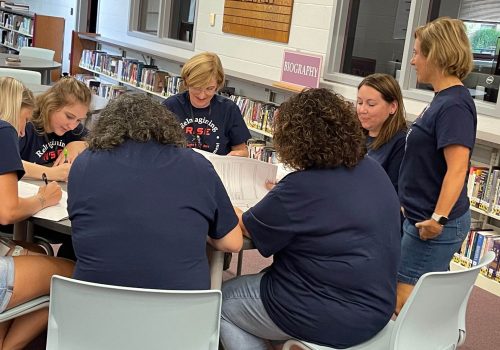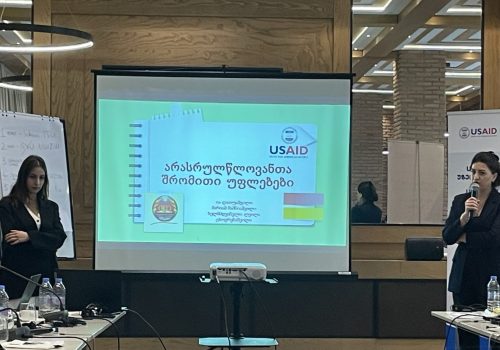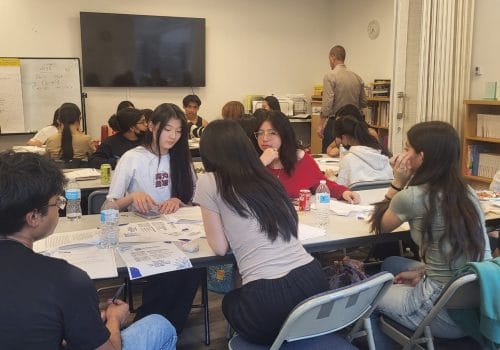Reflections on the NALP/Street Law Legal Diversity Pipeline Program: Looking Backward to Move Diversity Forward

Share this Article
Jessica Buchsbaum is the Chief Legal Talent Officer for Bilzin Sumberg LLP in Miami, Florida. This article originally appeared in the August 2017 bulletin of the National Association for Law Placement (NALP).
Year after year, NALP members struggle to ensure that the legal profession accurately represents the diversity of the communities in which we reside and practice. We offer training programs, fellowships, scholarships, and mentoring programs. We conduct targeted outreach and recruiting efforts in the hope of employing and retaining diverse attorneys.
My firm is one of the many firms that directs some of the focus of its diversity initiatives toward students too young for law school. We do this through the NALP/Street Law Legal Diversity Pipeline Program. The program has been a very rewarding and positive experience for us. In fact, this year our firm had the pleasure of attending the Annual Street Law Awards Banquet, where the teacher from our partner high school, Mr. Julio Garcia, was named Educator of the Year. So, I’m even more excited than usual to share some information about the program, my firm’s involvement, and the myriad benefits for lawyers and students alike, and to encourage other firms to participate. Of course, no NALP article would be complete without offering some best practices for implementation!
The NALP/Street Law pipeline program was piloted during the 2008-2009 academic year with the express purpose of increasing diversity in the legal profession by encouraging young people from diverse communities to pursue legal careers. The program culminates with a field trip for students to attend a full-day workshop at a law firm, where they participate in interactive legal simulations and problem solving. Throughout the program, lawyers teach lessons in a few substantive areas of law. The students are introduced to the many professional roles that support a law firm, and they begin to appreciate how the law impacts ordinary people in their daily lives.
Bilzin Sumberg became involved with the program during the 2009-2010 academic year, partnering with Coral Gables Senior High School, where 90% of the student population is considered an ethnic minority and almost 70% are economically disadvantaged. We haven’t looked back since! Like many firms, we are keenly interested in increasing diversity within the legal profession, and we have many initiatives focused on recruiting, developing, and retaining lawyers. However, we felt there was a piece lacking in the diversity puzzle. The only way we would truly move the needle forward was for the profession to attract a larger number of minorities to consider entering it. Easier said than done! But exposing high school students to the profession early — and at a crucial stage —seems to be a step in the right direction. While pipeline programs are a long-term investment and may even be one that won’t benefit our firm directly, they are needed for the profession at large. However, I do have a special bottle of champagne reserved for the day we hire our first pipeline program lawyer!
Each year, the students who participate in the program are surveyed at its conclusion. The results reinforce our notion that interacting with students and exposing them to a law firm environment, legal concepts, and professional role models can build a stronger pipeline. In the most recent survey results, 88% of our Coral Gables High students indicated that they were more interested in a legal career after participating in the program than they had been before. As Mr. Garcia observed:
“The diversity pipeline program is a true eye-opener for students. It exposes them to some of the myths and realities of the profession. It also benefits those students who don’t want to be attorneys but perhaps still have an interest in the legal field. I am also convinced that the attorneys who participate in the program truly enjoy the experience.”
You know what? Mr. Garcia is absolutely right! I think our lawyers have gained as much as they have given by participating in this program. Standing in front of a group of 65 teenagers is far more intimidating than addressing any judge or negotiating with any seasoned opposing counsel. The attorneys also work in a team across practice groups.
The program kicks off with an orientation where all volunteers learn interactive and engaging teaching techniques and they meet Mr. Garcia to learn about the high school. We also determine which three lesson plans we want to teach and then the volunteers self-select the team they want to be on, based on the topic of the lesson.
Many attorneys select teams outside of their normal practice to stretch their thinking and to experience a change of pace — or sometimes just to work with their friends in the firm. The teams determine which members will go to the high school to teach the lessons in the class-room and which team members will run each of the two workshops in the office during the student field trips. There are also opportunities for small volunteer parts, such as speaking to the students about their own career paths in law at a welcome breakfast, giving the students a tour of the office, or having lunch with the students at the conclusion of the workshops.
There are many opportunities to volunteer as much, or as little, as time and schedules permit — and all the volunteers are appreciated, add value to the program, and find their contributions meaningful.
One of our partners, Mildred Gomez, has been participating in the program since she was an associate. She recently said,
“My favorite thing about the program is that it gives students who otherwise would perhaps never have had an opportunity to meet an attorney, a paralegal, or other business professionals, to do so in a workplace setting. I believe that it helps open their eyes to all the opportunities that are out there for them. It also lets them see how diverse the legal practice is — it’s not the courtroom drama they see on television. I would imagine too that it helps those who are working and striving toward something better to quantify what it is that they are working for.”
What can be more rewarding?
Hopefully, I’ve convinced you of the value a diversity pipeline program has to the legal field, to students, and to attorneys, and if you are at a law firm you’ve already started drafting your email to NALP Executive Director Jim Leipold to sign up. After you’re done with your email, come back for some ideas for implementing a successful NALP/Street Law Legal Diversity Pipeline Program:
- Consider the calendar! You’ll want to look at the workflow for the administrative department responsible for running the program. If recruiting is involved, OCI season may not be the best time. If professional development is involved, you’ll likely want to avoid year end. Additionally, you need to consider the academic calendar for its breaks and testing dates. After the first year, my firm settled on spring (with the workshop concluding right before spring break) as the best time for us to administer the program.
- Street Law offers amazing resources. They conduct orientation and provide lesson plans and guidance along the way. Use those resources, but don’t be afraid to tailor your lesson plans to your firm’s culture or practices. For example, we have a significant real estate practice, so we created our own lessons and workshops around commercial real estate transactions.
- The end goal of the program is to give the students a broad exposure to the legal profession, so be sure to include administrative staff, departmental staff, and paralegals.
- When working with the students, don’t assume anything about their knowledge of the path to becoming a lawyer. Start with the basics and walk them through the process. Ask them questions along the way to make sure they understand.
- Try to keep the students engaged by offering relevant and interesting content. We make sure every year that one of our three lessons includes something personal to their demo-graphic, such as a workshop on cyberbullying. The other two lessons are related to our commercial practice. All of our mock scenarios include local celebrities or pop culture references to entertain the participants.
- Feed them! Whenever we visit the classroom we bring donuts; when the students are in our office, we shower them with snacks. Food breaks the ice and they stay engaged and contribute throughout the workshops. (Maybe it’s the sugar?)
- Finally, consider partnering with a local law school and planning a field trip there. We’ve partnered with the University of Miami, and during the field trip the students have heard from the admissions office and law students about getting into law school, scholarships, and the student experience.
If you are interested in learning more about the NALP/Street Law Legal Diversity Pipeline Program and getting involved, please see www.nalp.org/streetlaw, or reach out to Jim Leipold at [email protected] or Joy Dingle at [email protected]. I’m also happy to serve as a resource to anyone looking to embark on this wonderful journey.



